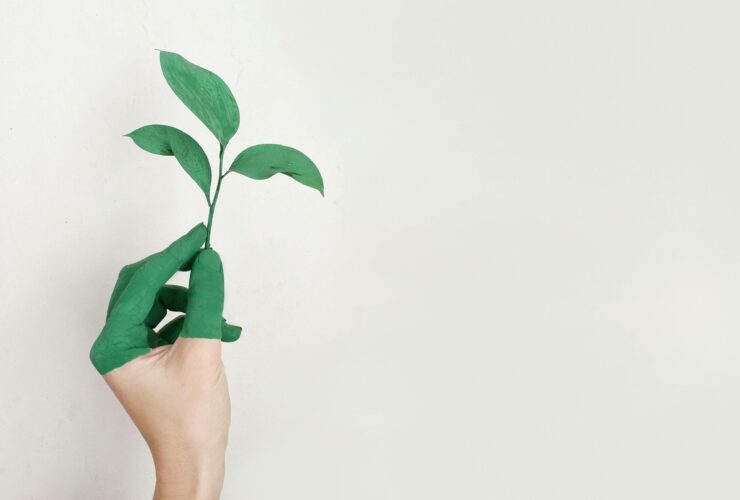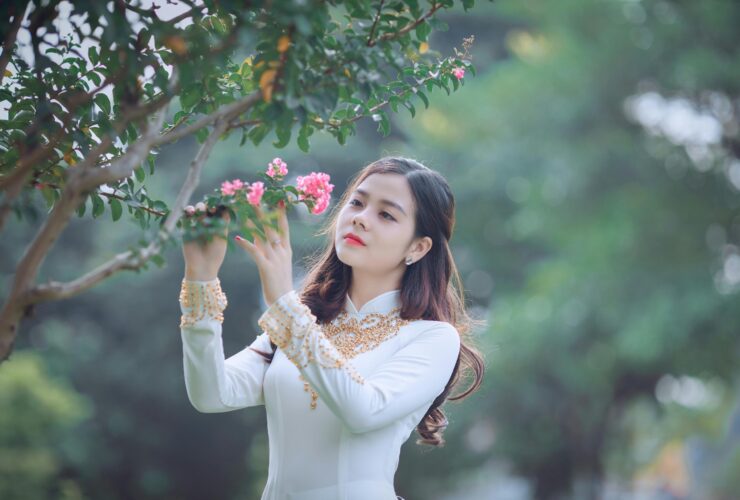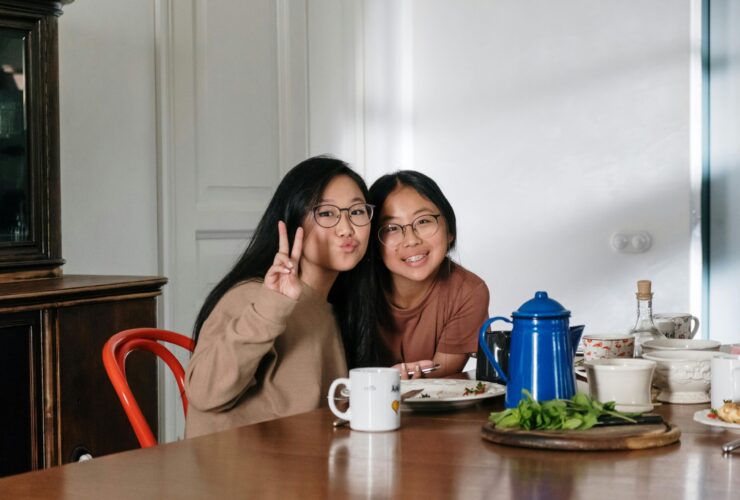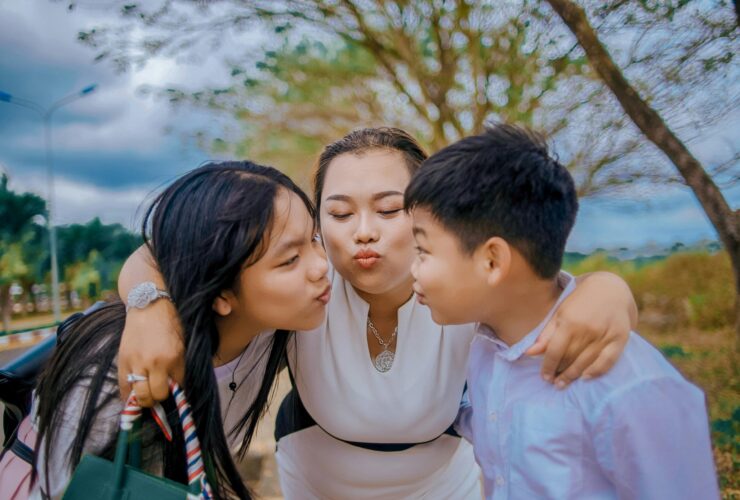Body image is inherently complex, shaped by personal experiences, societal messages, and cultural influences that interweave in ways that can profoundly impact how we see ourselves. For Asian Americans, this complexity deepens as we navigate not just mainstream American beauty standards, but also traditional cultural expectations, family pressures, and the intersections of race, gender, and identity.
The experience of being Asian American means existing between worlds. It involves honoring cultural heritage while adapting to American society, and managing family expectations while forging individual identity. When it comes to body image, this intersection creates unique pressures and challenges that deserve recognition and understanding.

The Reality of Body Dissatisfaction
Research consistently shows that many Asian Americans experience higher rates of body dissatisfaction compared to other ethnic groups. This heightened dissatisfaction stems from navigating multiple, often conflicting sets of beauty standards simultaneously. Asian Americans may feel pressure to conform to both Western ideals of attractiveness and traditional Asian cultural values around appearance and presentation.
This dual pressure creates an impossible standard where individuals feel they must somehow satisfy expectations from multiple cultures, each with its own definitions of beauty, success, and worth. The result is often a sense of never being “enough,” and not fitting perfectly into any single standard while being measured against all of them.
Competing Beauty Standards and Expectations
Societal and Media Influences
Mainstream American media has historically presented very narrow definitions of beauty, predominantly featuring white, thin, and conventionally attractive individuals. For Asian Americans, this means constantly seeing representations of beauty that may not reflect their own features, skin tones, or body types. Even as media representation has slowly begun to diversify, the underlying messages about what constitutes attractiveness often remain rooted in Eurocentric ideals.
Social media has amplified these pressures, creating platforms where filtered, edited, and curated images set unrealistic standards for everyone, but particularly for those already navigating cultural identity questions. The constant exposure to idealized images can intensify feelings of inadequacy and fuel desires to alter natural features.
Cultural and Familial Expectations
Simultaneously, many Asian American families maintain traditional cultural values about appearance that may emphasize different traits than mainstream American culture. These might include preferences for certain body types, skin tones, or presentations that align with historical cultural ideals.
Family comments about weight, skin color, or other physical features can have lasting impacts on body image and self-esteem, even if they’re well-intentioned. The cultural practice of openly commenting on appearance, which may be normal and accepted within families, can create additional pressure to conform to specific standards.
Women and Feminine-Presenting Individuals
For Asian American women and feminine-presenting individuals, the intersection of cultural and gendered expectations creates particularly intense pressures around appearance.
The Pursuit of “Ideal” Features
The pressure to be skinny in order to be considered pretty is pervasive, often starting from childhood and reinforced by both cultural and mainstream messages. Beyond weight, there are expectations around having bigger eyes, lighter skin, and sometimes lighter hair and eye color, all of which are features that may require cosmetic intervention to achieve.
Many Asian American women feel pressure to alter their natural eye and nose shapes through makeup techniques, cosmetic procedures, or other methods to achieve features that align more closely with Western beauty standards. The message underlying these pressures is that natural Asian features need to be “corrected” or “improved” to be considered attractive.
Hyperfocus on Feminine Presentation
There’s often an intense focus on feminine presentation and being beautiful, with beauty defined very specifically as being small, delicate, and—most importantly—not fat. This creates a narrow window of acceptable presentation that can feel suffocating and unattainable for many.
The emphasis on being small and delicate can conflict with desires to be strong, athletic, or to take up space in the world. Asian American women may feel caught between wanting to honor their strength and capabilities while also meeting cultural expectations around femininity.
Western Stereotypes and Limited Representations
Western stereotypes often pigeonhole Asian women into two narrow categories: cute or sexy, with little allowance for anyone who doesn’t fit neatly into one of these presentations. This binary leaves no space for Asian American women who are average-looking, unconventionally attractive, or who simply don’t want to perform either “cute” or “sexy” for others.
These stereotypes also hypersexualize Asian women while simultaneously infantilizing them, creating impossible standards where women are expected to be both sexually appealing and childlike, a combination that’s both unrealistic and problematic.
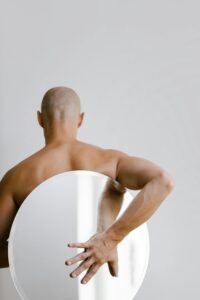
Men and Masculine-Presenting Individuals
Asian American men and masculine-presenting individuals face their own unique set of challenges around body image and attractiveness, often dealing with systematic emasculation and narrow definitions of acceptable masculinity.
Emasculation and Attractiveness
The systematic emasculation of Asian men in Western culture has created a narrative where Asian men are seen as generally unattractive or only able to be attractive in very specific, limited ways. Often, Asian men are valued primarily for intelligence while their physical attractiveness, masculinity, and desirability are questioned or dismissed.
This cultural and societal messaging can profoundly impact both self-esteem and body image, leading many Asian American men to internalize beliefs about their own attractiveness and worth. The constant message that they don’t fit conventional standards of masculinity can create lasting psychological impacts.
Additionally, many Asian men feel intense pressure regarding their height and general build, often feeling forced to become more muscular to compensate for perceived inadequacies. The stereotype that Asian men are smaller or less physically imposing can drive unhealthy relationships with exercise, supplements, or other body modification attempts.
Dating and Desirability
In dating contexts, Asian men often face discrimination where they are overlooked and ignored, generally perceived as less attractive or less manly than men of other ethnicities. This systematic exclusion can create deep wounds around self-worth and attractiveness.
Studies have shown that Asian men receive fewer responses on dating platforms and face explicit racial preferences that exclude them from consideration. This real-world discrimination reinforces negative messages about attractiveness and desirability.
Conflicting Standards of Masculinity
Asian American men must navigate between American and Asian standards of masculinity, which may emphasize different traits and characteristics. American masculinity might prioritize physical dominance, overt confidence, and certain body types, while traditional Asian masculinity might value different qualities entirely.
This navigation requires constantly shifting presentations and self-perception depending on the context, which can be exhausting and confusing for identity development.
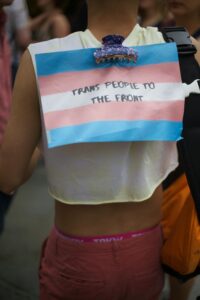
LGBTQ+ and Genderqueer/Nonbinary Individuals
For Asian Americans who are also LGBTQ+ or genderqueer/nonbinary, the intersection of multiple marginalized identities creates additional layers of complexity around body image and acceptance.
Binary Expectations and Cultural Challenges
Traditional binary stereotypes and cultural expectations can create significant challenges for acceptance within both Asian American communities and broader society. Many Asian cultures have strong binary gender expectations that may not leave room for gender nonconforming expressions or identities.
LGBTQ+ Asian Americans may face rejection or lack of understanding from family and cultural communities while simultaneously navigating mainstream discrimination. This dual marginalization can make finding acceptance and community particularly challenging.
Lack of Representation
There’s a severe lack of representation and visibility for LGBTQ+ Asian Americans in media, role models, and community spaces. Without seeing diverse representations of people who share multiple aspects of their identity, individuals may struggle to envision possibilities for their own self-expression and acceptance.
Even within LGBTQ+ spaces, Asian Americans may face racism and discrimination that excludes them from full participation and acceptance. The intersection of racism and homophobia or transphobia can create unique challenges that neither community may fully understand or address.
Whiteness as the Standard
Within LGBTQ+ communities, whiteness often remains the particular standard for attractiveness and desirability. White queer men, in particular, dominate beauty standards and representations of desirable LGBTQ+ identity, making it particularly challenging for queer men of color to be seen and recognized as attractive or desirable.
This dynamic recreates racial hierarchies within spaces that should be focused on liberation and acceptance, leaving LGBTQ+ Asian Americans feeling marginalized within their own communities.
Moving Toward Healing and Acceptance
Understanding these complex intersections is the first step toward building healthier relationships with our bodies and identities. Recognizing that the pressures and standards we’ve internalized come from systems of oppression, not from our own inadequacies, can help begin the healing process.
Building community with others who share similar experiences, seeking representation in media and role models, and working to challenge harmful beauty standards within our own communities are all important steps. Therapy, particularly with providers who understand cultural and identity intersections, can also provide valuable support for navigating these complex dynamics.
Most importantly, we can work to expand definitions of beauty, attractiveness, and worth within our own circles. Every time we celebrate diverse representations of Asian American beauty, challenge harmful stereotypes, or simply practice self-compassion, we contribute to creating more inclusive and affirming spaces for everyone navigating these intersections.
The goal isn’t to eliminate all cultural influences on beauty standards, since cultural heritage and values remain important. Instead, it’s about creating space for diverse expressions of identity and beauty that honor both cultural background and individual authenticity, allowing people to exist fully as themselves without having to choose between different aspects of their identity.
Relevant Resources
Yellow Chair Collective:
- Healing from Relational Parent Wounds with Expert Author Susan Lieu
- What is Toxic Diet Culture? | Eling Tsai, Nutritionist & Intuitive Eating Coach
Seek An Asian Therapist who Understands Body Image Struggles
If you are seeking therapy specifically tailored to your needs, consider reaching out to the therapists at Yellow Chair Collective. We understand that there may be unique contextual factors that may influence your experiences.
At our Los Angeles based practice serving all across California, Oregon, Washington, New York, and New Jersey, we have many skilled, trauma-informed, and culturally sensitive therapists who can provide an empowering therapeutic experience. For your added convenience and simplicity, we offer online therapy for anyone in the state of California or New York. We know that navigating your mental health journey can be challenging, and we want to support you along the way. Follow the steps below to begin.
- Fill out the contact form to get connected with us.
- Get matched with one of our culturally sensitive therapists.
- Start the next step in your healing journey today.
Other Services at Yellow Chair Collective
There are many options for treatment using online therapy in California , Oregon, Washington, and New York, it just depends on what you’re needing. And while we certainly service Asian American folks, we also work with individuals from other cultures, too. So, whether you’re needing support in overcoming anxiety, burnout, trauma, or PTSD, we can help. Likewise, we serve teens and couples in need of support, too. So when you start online therapy with us, you can bring your whole self, including past struggles, cultural impacts, and more.

